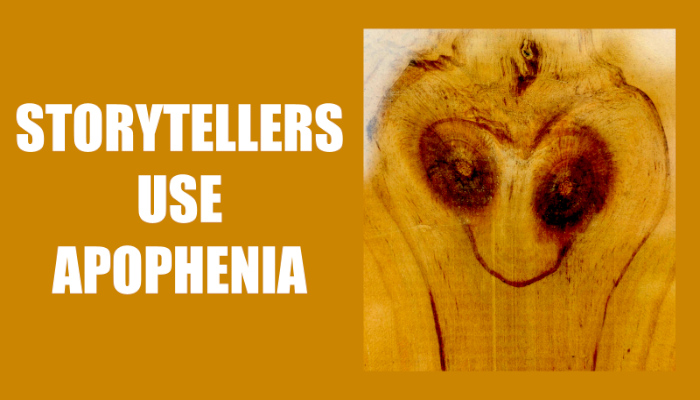
Have you ever stared at a piece of wood, a marble slab, or a cloud formation and saw a face? Pareidolia–the ability to see faces in random patterns–is a special case of a larger phenomenon called apophenia, which results from our brains being on a perpetual mission to find patterns in anything. Our brains are programmed to find a reason for everything, whether there is one or not. Consider that the roots of all superstitions, conspiracy theories, and urban legend result from someone attributing meaning to random events.
Apophenia is both blessing and curse for storytellers. It’s a curse when you fail to explain a new concept to someone adequately. Without a clear understanding of your idea, the recipient will likely cram your data into their own meaning model…which more than likely will be erroneous. The curse of apophenia is that we believe what we believe–evidence be damned. The recent outbreak of measles in Washington is a direct result of apophenia, where a significant number of parents decided not to vaccinate their children from a highly contagious disease based on connecting data dots incorrectly.
And yet, apophenia can also be used as a blessing. The ability to create characters that see more meaning than exists frequently leads to a comedy of errors. For example, in The Man Who Knew Too Little, a hapless American thinks he’s participating in an interactive play yet has actually stumbled into a real-life spy thriller. He thinks that he’s playing a fun role while trained killers think he’s the second coming of James Bond. Or the movie, War Games, where a high school hacker breaks into a government computer, only to have his actions interpreted as those supporting a Russian conspiracy to start World War III. Both storytellers used the phenomenon of apophenia to have the characters misinterpret actions and motivations.
And while apophenia can be used to write a screwball comedy, it can also be used in business storytelling. In your industry, do people see patterns that do not exist? Are these patterns generally accepted as fact? Perhaps you need to point them out? Or, perhaps you can use apophenia to lead an audience to a false conclusion to demonstrate a cautionary tale of how easy it is to be mislead. Either way, apophenia is now a powerful tool in your storytelling toolbox.
Photo Credit: This photo comes from Paul B’s Flickr channel who offered is under an Attribution-NonCommercial 2.0 Generic (CC BY-NC 2.0) license.